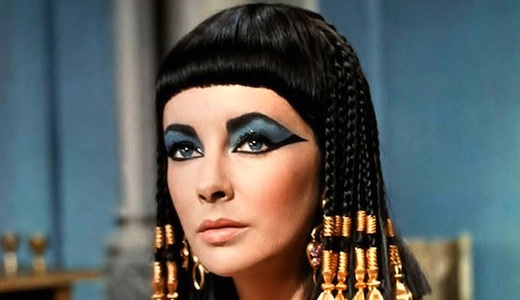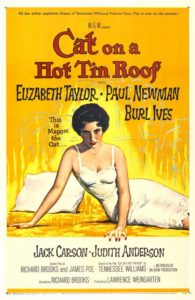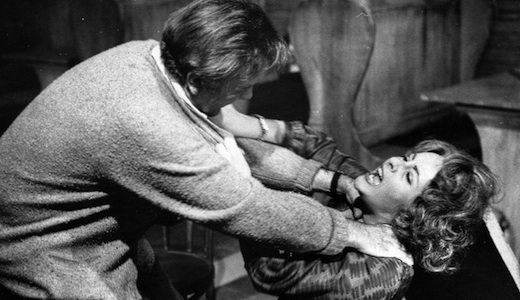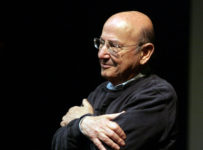With a screen career that spanned over seven decades, and a list of 70 screen credits to her name, there are few Hollywood names as iconic as Elizabeth Taylor. The two-time Academy Award winner, who is almost as famous for her off-screen antics including eight marriages to seven men, is best remembered for her iconic roles in Cleopatra, Cat on a Hot Tin Roof, Giant, Who’s Afraid of Virginia Woolf and National Velvet. She died last night at the age of 79.
Born to American parents in Britain in 1932, they moved to the United States in the shadow of the Second World War. She made her first screen appearance at the age of 10 in There’s One Born Every Minute (1942), and it was quickly followed by Lassie Come Home in 1943. Yet it was arguably her role of Velvet Brown in National Velvet, the story of “a boy…a girl…and a horse”, alongside Mickey Rooney and Angela Lansbury that made her a young star. Her adolescent career continued through Life with Father and Little Women, along with co-starring as Spencer Tracy’s daughter in Father of the Bride and Father’s Little Dividend (later remade with Steve Martin and the less iconic Kimberley Williams-Paisley in Taylor’s role).
The same year as Father’s Little Dividend, Taylor made her breakthrough adult performance in George Stevens’ A Place in the Sun (1951), alongside Montgomery Clift, earning her reputation as a powerful on-screen seductress. Her transition from child star to Hollywood starlet was complete, in a decade that would see her in such films as Ivanhoe (1952), rejoining George Stevens for mega-hit Giant (alongside the late James Dean and Rock Hudson), Cat on a Hot Tin Roof (1958) and earning her first Academy Award nomination for Raintree Country (1957). She would win her first gold statuette only a few short years later for Butterfield 8 (1960), where she played a ‘part model, part call girl’ and certified her range as an actress.
Despite a three-year hiatus, due to a combination of personal tragedies and health problems, Taylor was by this stage one of the biggest stars on the planet. She made history with Cleopatra (1963), not only because of it being one of the most epic money guzzlers of all time that almost sunk the studio, but due to the $1 million sum she commanded for the performance: the highest on record for an actress at the time. While the critical acclaim for the Joseph L. Mankiewicz version of the historical epic has remained mixed over the last half-century, it is also the role with which Taylor has become inextricably linked to over the years. The glamour of Hollywood and the opulence of Ancient Egypt, combined with Taylor’s own doomed romances, have perhaps combined in the publics’ mind to make Taylor and he most famous of roles one and the same. It was here that she would also begin a relationship with actor Richard Burton, who she would appear alongside eight time and be the only man that she would marry twice!
Taylor would win her second Academy Award for her role alongside Burton in Who’s Afraid of Virgina Woolf (1966), an adaptation of the Edward Albee play. As one half of a bitter ageing couple, taking out their frustrations and shattered dreams on a young couple, she perhaps best summed up her own character with the line from the film: “I’m loud and I’m vulgar, and I wear the pants in the house because somebody’s got to, but I am not a monster. I’m not”. Another successful adaptation would follow, with William Shakespeare’s The Taming of the Shrew (1967), directed by Franco Zeffirelli, although this would mark the last high point of her career. Some fairly unmemorable performances followed that same year, including The Comedians and Doctor Faustus (in which would Taylor would play another icon of ancient history, Helen of Troy). She famously put on weight during the 1970s and 1980s, and her off-screen antics and string of marriages began to eclipse her professional career in the public limelight.
Taylor’s late career was less distinguished, even being declared dead at several points during the early 2000s, although the Hollywood battler would continue to act up until 2003, over sixty years since her debut in There’s One Born Every Minute. Despite a well-publicised battle with a benign brain tumour, skin cancer and several broken bones (including breaking her back no less than five times), Taylor was still making later career appearances on TV in Malice in Wonderland (1985), along with cameos on The Simpsons and The Nanny. One of her last big-screen appearances was in The Flintstones (1994), by which stage she was parodying her own iconic imagery. In 1999, Taylor was appointed Dame Commander of the Order of the British Empire. It is unlikely we will see a star as big as Elizabeth Taylor again in this or any other century.







